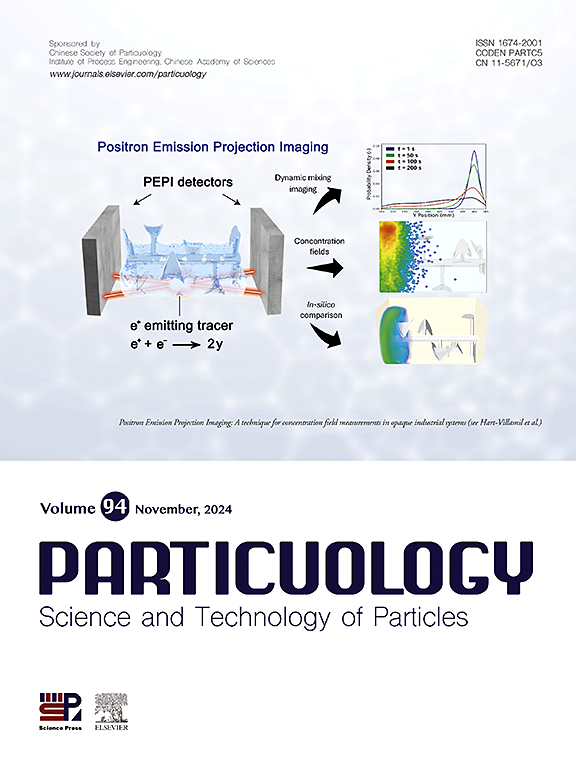Preparation and characterization of a novel activated carbon from wheat dust and its adsorption mechanism for tetracycline hydrochloride
IF 4.1
2区 材料科学
Q2 ENGINEERING, CHEMICAL
引用次数: 0
Abstract
In this study, a method for preparing activated carbon (AC) from wheat dust (WD) was developed to achieve efficient removal of tetracycline hydrochloride (TCH). The AC, prepared through response surface methodology with a carbonization temperature of 590 °C, a NaOH to WD ratio of 4:1, and an activation temperature of 800 °C, exhibited a high specific surface area of 2821.58 m2/g. It demonstrated a remarkable TCH removal capacity of 1414.65 mg/g in aqueous solution. The AC retained an adsorption capacity of 1035.36 mg/g after five cycles and maintained over 80% of its adsorption capacity in different water bodies. The adsorption of TCH by AC, primarily controlled by surface sites through chemical and physical interactions, involved mechanisms such as pore-filling, electrostatic interactions, hydrogen bonding, π-cation interactions, and π-π interactions. This study highlights the potential of WD in preparing effective adsorbents, providing valuable insights for the comprehensive utilization of similar byproducts.

麦尘活性炭的制备、表征及其对盐酸四环素的吸附机理
研究了一种以小麦粉为原料制备活性炭的方法,以达到高效去除盐酸四环素的目的。在炭化温度为590℃,NaOH与WD比为4:1,活化温度为800℃的条件下,采用响应面法制备的AC具有2821.58 m2/g的高比表面积。在水溶液中对TCH的去除率为1414.65 mg/g。经过5次循环后,活性炭的吸附量仍保持在1035.36 mg/g,在不同水体中均保持80%以上的吸附量。活性炭对TCH的吸附主要受表面位置的化学和物理相互作用控制,涉及孔隙填充、静电相互作用、氢键、π-阳离子相互作用和π-π相互作用等机理。该研究突出了WD在制备有效吸附剂方面的潜力,为类似副产物的综合利用提供了有价值的见解。
本文章由计算机程序翻译,如有差异,请以英文原文为准。
求助全文
约1分钟内获得全文
求助全文
来源期刊

Particuology
工程技术-材料科学:综合
CiteScore
6.70
自引率
2.90%
发文量
1730
审稿时长
32 days
期刊介绍:
The word ‘particuology’ was coined to parallel the discipline for the science and technology of particles.
Particuology is an interdisciplinary journal that publishes frontier research articles and critical reviews on the discovery, formulation and engineering of particulate materials, processes and systems. It especially welcomes contributions utilising advanced theoretical, modelling and measurement methods to enable the discovery and creation of new particulate materials, and the manufacturing of functional particulate-based products, such as sensors.
Papers are handled by Thematic Editors who oversee contributions from specific subject fields. These fields are classified into: Particle Synthesis and Modification; Particle Characterization and Measurement; Granular Systems and Bulk Solids Technology; Fluidization and Particle-Fluid Systems; Aerosols; and Applications of Particle Technology.
Key topics concerning the creation and processing of particulates include:
-Modelling and simulation of particle formation, collective behaviour of particles and systems for particle production over a broad spectrum of length scales
-Mining of experimental data for particle synthesis and surface properties to facilitate the creation of new materials and processes
-Particle design and preparation including controlled response and sensing functionalities in formation, delivery systems and biological systems, etc.
-Experimental and computational methods for visualization and analysis of particulate system.
These topics are broadly relevant to the production of materials, pharmaceuticals and food, and to the conversion of energy resources to fuels and protection of the environment.
 求助内容:
求助内容: 应助结果提醒方式:
应助结果提醒方式:


